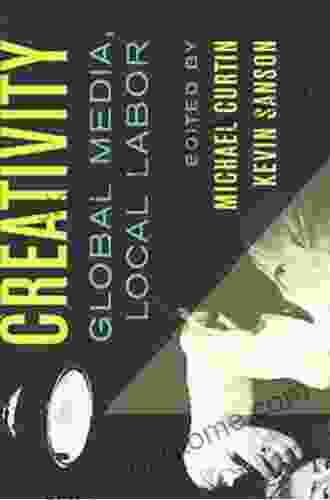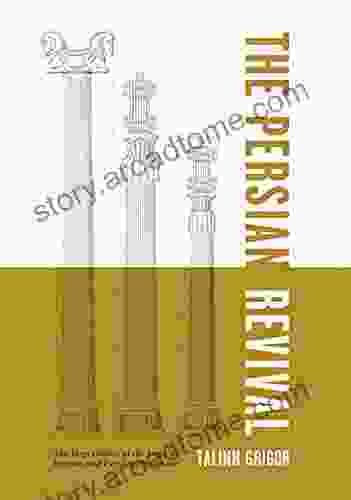The Imperialism of the Copy in Iranian and Parsi Architecture: Exploring Cultural Heritage and Identity through Architectural Replication

Architecture, as a testament to human ingenuity and cultural expressions, often serves as a physical manifestation of historical events and societal transformations. The interplay between architectural forms and their socio-political contexts has been a subject of extensive scholarly inquiry. This article delves into the fascinating case of the "copy" in Iranian and Parsi architecture, examining how the replication of architectural styles and elements has played a significant role in shaping cultural heritage and identity.
The Imperial Origins of Replication
The practice of architectural replication in Iran and India traces its roots to the Safavid Empire (1501-1736),which spanned vast territories encompassing present-day Iran, Iraq, and Afghanistan. Under the Safavids, ambitious building projects were undertaken to consolidate imperial power and promote a unified cultural identity. The construction of monumental mosques, palaces, and caravanserais served as symbols of Safavid authority and grandeur.
4.4 out of 5
| Language | : | English |
| File size | : | 33106 KB |
| Text-to-Speech | : | Enabled |
| Enhanced typesetting | : | Enabled |
| Print length | : | 276 pages |
| Screen Reader | : | Supported |
As the empire expanded, Safavid architects encountered diverse architectural traditions, including those of the Mughal Empire in India. The incorporation of Indian elements into Iranian architecture became a hallmark of this period, particularly in the construction of mosques and tombs. The result was a unique hybrid architectural style that reflected the Safavid's imperial aspirations and the cultural exchange between Iran and India.
The Migration and Adaptation of Architectural Styles
In the 18th and 19th centuries, with the rise of European colonialism in India, Parsi communities from Gujarat migrated to Bombay and other cities. These migrants brought with them their distinctive architectural traditions, influenced by both Iranian and Indian styles. In their new surroundings, Parsis commissioned the construction of temples, housing, and public buildings that echoed the architectural vocabulary of their ancestral homeland.
The adaptation of Iranian architectural forms in Parsi architecture was not merely a matter of nostalgia or cultural preservation. It also served as a means of asserting a distinct cultural identity within the context of a rapidly changing urban landscape. By incorporating elements such as bulbous domes, pointed arches, and intricate tilework, Parsi architects created a built environment that simultaneously evoked both their Iranian heritage and their present circumstances in India.
Architectural Replication as a Form of Cross-Cultural Dialogue
The replication of Iranian architectural styles in Parsi contexts can be seen as a form of cross-cultural dialogue, where architectural elements and motifs became vehicles for expressing shared cultural values and aspirations. The adaptation of Iranian architectural forms in India was a testament to the porosity of cultural boundaries and the fluidity of architectural traditions.
Moreover, the shared use of architectural elements between Iranian and Parsi communities fostered a sense of kinship and connection. The replication of familiar forms and motifs in a foreign land served as a reminder of their common roots and the bonds that united them.
The Imperialism of the Copy: A Complex Legacy
The notion of "imperialism of the copy" captures the complex relationship between architectural replication and power. On the one hand, the replication of architectural styles and elements can be seen as a form of cultural appropriation, where dominant cultures impose their architectural vocabularies upon others.
On the other hand, architectural replication can also be a form of cultural resistance, where marginalized communities assert their cultural identity through the appropriation of architectural forms from their colonizers. In the case of Iranian and Parsi architecture, the replication of Safavid architectural styles can be seen as both a manifestation of imperial authority and a means of cultural preservation and expression for the Parsi community.
Contemporary Perspectives on Architectural Replication
In contemporary architectural discourse, the concept of architectural replication continues to generate debate. Some critics argue that replication stifles creativity and undermines the development of truly original architectural forms. Others, however, see value in the reinterpretation and adaptation of architectural traditions, viewing it as a way to engage with the past and create new architectural possibilities.
In Iran and India, contemporary architects are exploring innovative ways to incorporate traditional architectural elements into modern designs. By reinterpreting and transforming historical forms, they are creating a new architectural language that simultaneously honors the past and embraces the present.
The imperialism of the copy in Iranian and Parsi architecture presents a compelling case study in the complex relationship between architecture, cultural heritage, and identity. The replication of architectural styles and elements across cultures and time periods has fostered a rich and vibrant architectural landscape.
By examining the history and significance of architectural replication, we gain a deeper understanding of the ways in which architecture shapes cultural identities, expresses societal aspirations, and transcends political and geographical boundaries. The continued significance of architectural replication in contemporary practice underscores the enduring power of architectural forms to convey cultural meanings and connect people across time and space.
4.4 out of 5
| Language | : | English |
| File size | : | 33106 KB |
| Text-to-Speech | : | Enabled |
| Enhanced typesetting | : | Enabled |
| Print length | : | 276 pages |
| Screen Reader | : | Supported |
Do you want to contribute by writing guest posts on this blog?
Please contact us and send us a resume of previous articles that you have written.
 Book
Book Novel
Novel Page
Page Chapter
Chapter Text
Text Story
Story Genre
Genre Reader
Reader Library
Library Paperback
Paperback E-book
E-book Magazine
Magazine Newspaper
Newspaper Paragraph
Paragraph Sentence
Sentence Bookmark
Bookmark Shelf
Shelf Glossary
Glossary Bibliography
Bibliography Foreword
Foreword Preface
Preface Synopsis
Synopsis Annotation
Annotation Footnote
Footnote Manuscript
Manuscript Scroll
Scroll Codex
Codex Tome
Tome Bestseller
Bestseller Classics
Classics Library card
Library card Narrative
Narrative Biography
Biography Autobiography
Autobiography Memoir
Memoir Reference
Reference Encyclopedia
Encyclopedia Pere Castells
Pere Castells Susan Reimer
Susan Reimer Sergios Theodoridis
Sergios Theodoridis Lauraine Snelling
Lauraine Snelling Sarah Patterson
Sarah Patterson Samuel Lamerson
Samuel Lamerson Victoria Mccollum
Victoria Mccollum Lijia Zhang
Lijia Zhang Stephen Knapp
Stephen Knapp Terry Burrows
Terry Burrows Nikita Braguinski
Nikita Braguinski Shannon Moffett
Shannon Moffett Walter Camp
Walter Camp Nikos Houssos
Nikos Houssos Luca Vanzago
Luca Vanzago Maureen Johnson
Maureen Johnson Manvandra Kumar Singh
Manvandra Kumar Singh Lisa R Furman
Lisa R Furman Le Anne Roper
Le Anne Roper Lisa Bortolotti
Lisa Bortolotti
Light bulbAdvertise smarter! Our strategic ad space ensures maximum exposure. Reserve your spot today!

 Carlos DrummondQuadrophenia Cultographies: An Immersive Journey into the Cult Classic Film
Carlos DrummondQuadrophenia Cultographies: An Immersive Journey into the Cult Classic Film Clark BellFollow ·6.3k
Clark BellFollow ·6.3k Easton PowellFollow ·5.4k
Easton PowellFollow ·5.4k Charles DickensFollow ·6.3k
Charles DickensFollow ·6.3k John SteinbeckFollow ·8.4k
John SteinbeckFollow ·8.4k Rubén DaríoFollow ·7.9k
Rubén DaríoFollow ·7.9k Stephen FosterFollow ·14.1k
Stephen FosterFollow ·14.1k Fernando PessoaFollow ·4.6k
Fernando PessoaFollow ·4.6k Edgar CoxFollow ·13.1k
Edgar CoxFollow ·13.1k

 E.M. Forster
E.M. ForsterThe Real Blueprint to Short-Term Rental Success
Are you ready to create a...

 Mark Mitchell
Mark MitchellMidas Touch: The Astrology Of Wealth
Are you ready to tap into the cosmic forces...

 Grant Hayes
Grant HayesPrecarious Creativity: Unpacking the Global Media and...
In the ever-evolving landscape of the...

 Cameron Reed
Cameron ReedGuru Govind Singh: A Life of Courage and Inspiration for...
Guru Govind Singh, the tenth Sikh guru,...

 Yukio Mishima
Yukio MishimaCastles & Shapes: The Enchanting World of Ris...
In the realm of...

 Jerome Blair
Jerome BlairGolden Keys To Jyotisha Volume Ten: The Ultimate Guide to...
Embark on an...
4.4 out of 5
| Language | : | English |
| File size | : | 33106 KB |
| Text-to-Speech | : | Enabled |
| Enhanced typesetting | : | Enabled |
| Print length | : | 276 pages |
| Screen Reader | : | Supported |










